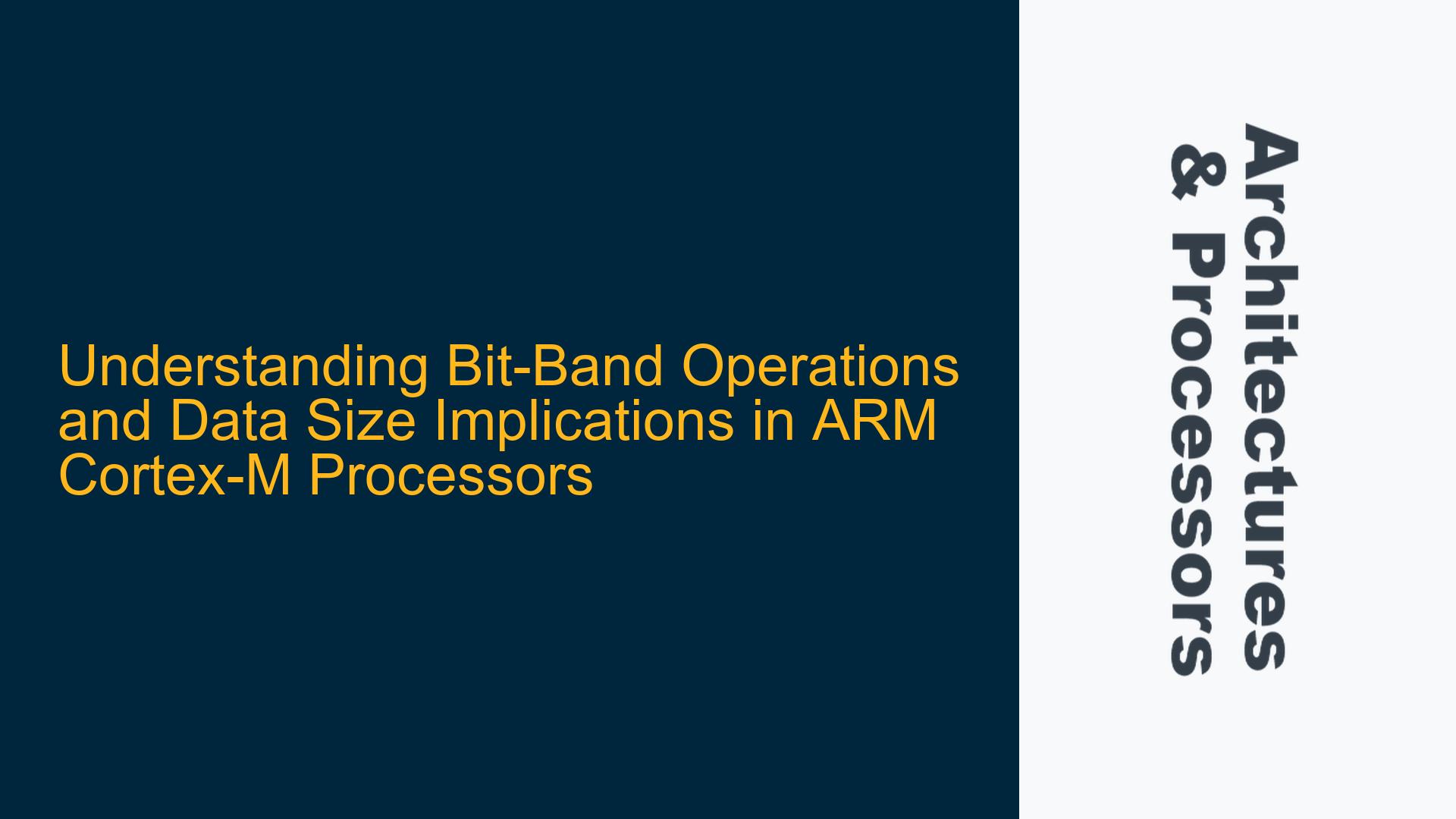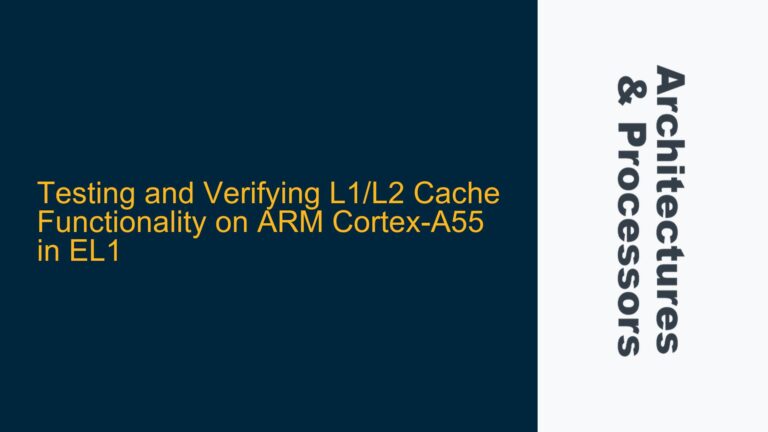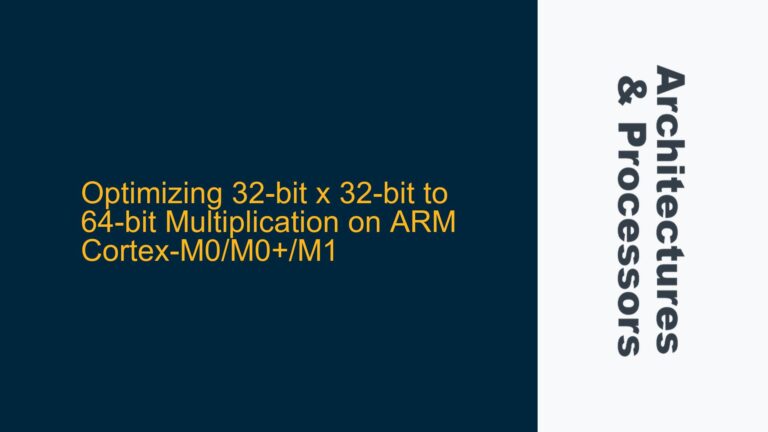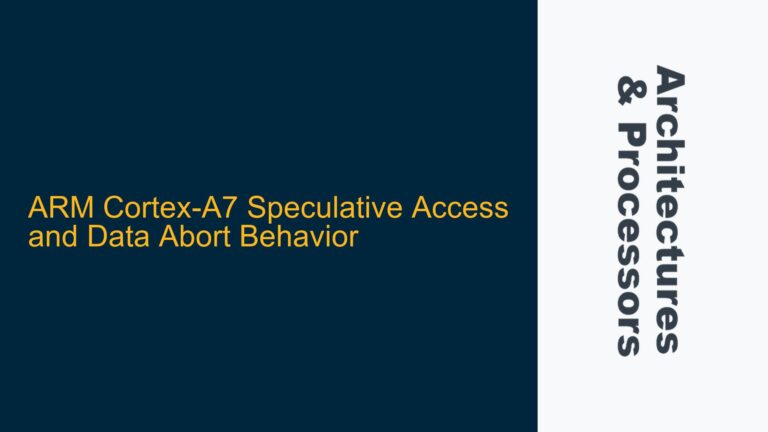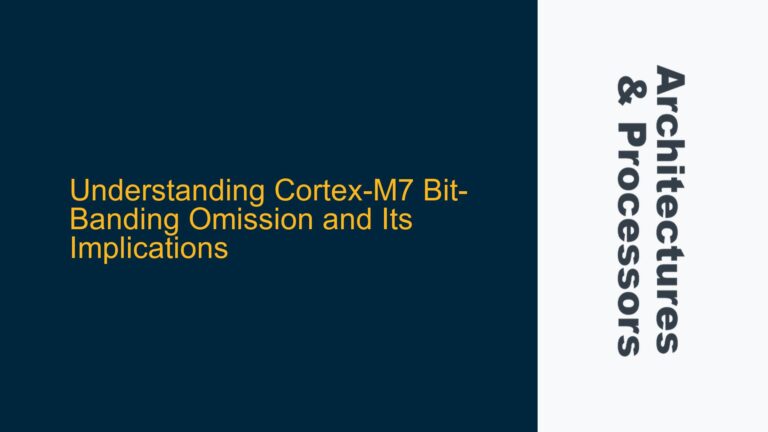Bit-Band Operation Mechanics and Data Size Challenges
Bit-band operations in ARM Cortex-M processors provide a mechanism to access individual bits in memory or peripheral registers as if they were separate variables. This feature is particularly useful in embedded systems where fine-grained control over memory or hardware registers is required. The bit-band region is a specific area in the memory map where each bit in the bit-band alias region corresponds to a single bit in the bit-band base region. This allows for atomic read-modify-write operations on individual bits, which is crucial in real-time systems where data integrity must be maintained.
The bit-band operation works by mapping a bit in the bit-band base region to a word in the bit-band alias region. For example, if you want to set or clear a specific bit in a peripheral register, you can write to the corresponding word in the bit-band alias region. The ARM Cortex-M processors support bit-band operations on both the SRAM and peripheral memory regions. However, the size of the data being manipulated can introduce complexities, especially when dealing with different data sizes such as 8-bit, 16-bit, or 32-bit values.
When performing bit-band operations on different data sizes, the alignment and the number of bits being accessed can affect the outcome. For instance, if you are working with an 8-bit data size, the bit-band operation will only affect the specific bit within that byte. However, if you are working with a 16-bit or 32-bit data size, the bit-band operation will affect the corresponding bit within the larger data word. This can lead to unintended side effects if the data size is not properly accounted for, especially when the bit-band operation is used in conjunction with other memory operations.
The bit-band operation is particularly useful in scenarios where you need to perform atomic operations on individual bits without the risk of race conditions. For example, in a multi-threaded environment, if two threads attempt to modify different bits within the same word simultaneously, the bit-band operation ensures that each thread’s modification is atomic and does not interfere with the other. However, if the data size is not properly managed, it can lead to unexpected behavior, such as modifying multiple bits unintentionally or causing alignment faults.
Misalignment and Data Size Mismatch in Bit-Band Operations
One of the primary causes of issues in bit-band operations is misalignment and data size mismatch. When performing bit-band operations, the address of the bit-band alias must be properly aligned to the data size being accessed. For example, if you are accessing a 32-bit word in the bit-band alias region, the address must be aligned to a 4-byte boundary. If the address is not properly aligned, it can result in a hard fault or undefined behavior.
Another common cause of issues is the mismatch between the data size being accessed and the data size expected by the bit-band operation. For instance, if you are performing a bit-band operation on an 8-bit value but the bit-band alias is configured for a 32-bit access, the operation may inadvertently modify adjacent bits in the memory word. This can lead to data corruption or unexpected behavior in the system.
Additionally, the bit-band operation assumes that the bit-band base region and the bit-band alias region are properly configured in the memory map. If the memory regions are not correctly set up, the bit-band operation may not function as expected. This can occur if the memory regions are overlapping or if the bit-band alias region is not properly mapped to the bit-band base region.
The use of different data sizes in bit-band operations can also introduce performance bottlenecks. For example, if you are performing bit-band operations on 8-bit values in a system that is optimized for 32-bit accesses, the additional overhead of managing the smaller data size can reduce the overall performance of the system. This is particularly important in real-time systems where performance is critical.
Proper Configuration and Alignment for Bit-Band Operations
To ensure that bit-band operations function correctly, it is essential to properly configure the memory regions and ensure that the data size and alignment are correctly managed. The first step is to verify that the bit-band base region and the bit-band alias region are correctly defined in the memory map. This involves checking the memory map configuration in the linker script or the system initialization code to ensure that the regions are properly allocated and do not overlap.
Next, it is important to ensure that the addresses used in the bit-band operations are properly aligned to the data size being accessed. For example, if you are performing a 32-bit bit-band operation, the address must be aligned to a 4-byte boundary. This can be achieved by using the appropriate address calculation and alignment techniques in the code. For instance, you can use the __align keyword in C or the ALIGN directive in assembly to ensure that the addresses are properly aligned.
When performing bit-band operations on different data sizes, it is crucial to use the correct data size in the operation. For example, if you are working with an 8-bit value, you should use the appropriate bit-band alias address for an 8-bit access. This can be achieved by using the correct bit-band alias calculation formula, which takes into account the data size and the bit position within the data word. The formula for calculating the bit-band alias address is as follows:
[ \text{Bit-Band Alias Address} = \text{Bit-Band Base Address} + (\text{Byte Offset} \times 32) + (\text{Bit Number} \times 4) ]
Where:
- Bit-Band Base Address is the base address of the bit-band region.
- Byte Offset is the offset of the byte containing the bit within the bit-band base region.
- Bit Number is the bit position within the byte.
It is also important to ensure that the bit-band operation is atomic and does not interfere with other memory operations. This can be achieved by using memory barriers or synchronization primitives to ensure that the bit-band operation is completed before other memory operations are performed. For example, you can use the __DSB (Data Synchronization Barrier) instruction in ARM Cortex-M processors to ensure that all memory operations are completed before proceeding to the next instruction.
In addition to proper configuration and alignment, it is important to consider the performance implications of using different data sizes in bit-band operations. If the system is optimized for 32-bit accesses, it may be more efficient to perform bit-band operations on 32-bit values rather than smaller data sizes. This can reduce the overhead of managing smaller data sizes and improve the overall performance of the system.
Finally, it is important to thoroughly test the bit-band operations to ensure that they function as expected. This involves writing test cases that cover different data sizes, alignments, and memory regions to verify that the bit-band operations are atomic and do not introduce any unintended side effects. By following these steps, you can ensure that bit-band operations are properly configured and aligned, and that they function correctly in your embedded system.
In conclusion, bit-band operations in ARM Cortex-M processors provide a powerful mechanism for atomic bit manipulation, but they require careful consideration of data size, alignment, and memory configuration. By properly configuring the memory regions, ensuring correct alignment, and using the appropriate data size, you can avoid common issues and ensure that bit-band operations function as intended. Additionally, by considering the performance implications and thoroughly testing the operations, you can optimize the use of bit-band operations in your embedded system.
